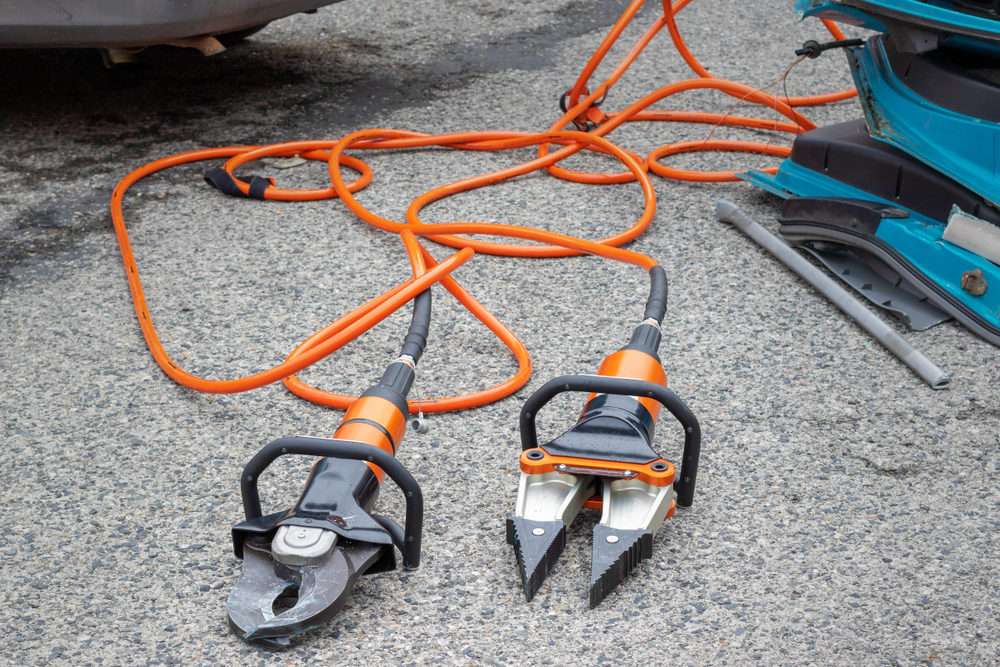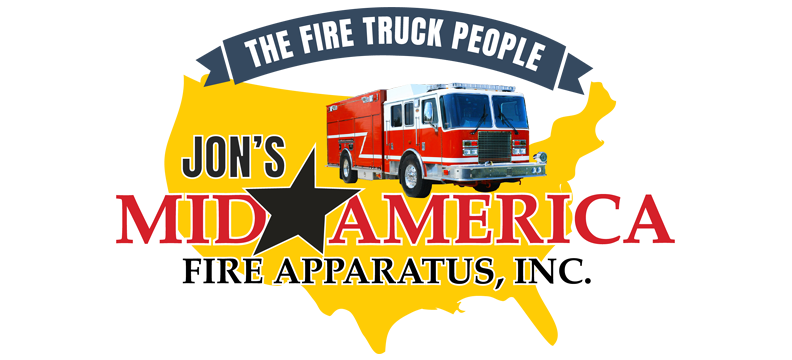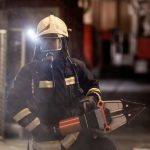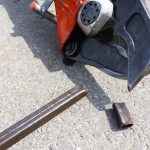
Rescue tools must be ready to perform the task at hand, which means they need proper maintenance and power. You have three choices regarding power supplies for your rescue tools: hydraulic, pneumatic, and electric. Today’s blog from Jon’s Mid-America Fire Apparatus focuses on the best of these three power supplies for your rescue tools.
Related Post: Critical Maintenance Steps for Hydraulic Rescue Tools
Hydraulic
Hydraulic rescue tools are a popular choice for fire departments. This technology has been around for years, and the Jaws of Life were invented in the early 1960s. Hydraulic systems are completely closed and self-contained, meaning there isn’t any venting of fluid or air.
The major benefit of hydraulic rescue tools is the power they provide. Hydraulics can extricate someone from a vehicle in seconds when they work properly. For situations where timing and speed are critical, hydraulic power can’t be beat.
Weight is the most concerning drawback of hydraulic equipment. It’s very heavy due to the pumps and motors involved. Another con is that hydraulic fluid’s operational range works best from 60 to 140 degrees Fahrenheit. Freezing temperatures aren’t kind to hydraulic systems. You must warm up your hydraulic rescue tools before using them in freezing temperatures. Hydraulics also tend to get loud, which may make it hard to hear members of your team.
Pneumatic
Pneumatic rescue tools use high-pressure air (rather than liquid) to operate. Air bags are the most common pneumatic equipment you’ll see on the scene, and they come in handy for when you need to lift an overturned vehicle to extricate someone underneath. Whizzer saws and air chisels represent other popular choices.
One main pro of pneumatic rescue tools is their weight. They weigh much less than their hydraulic counterparts. Pneumatics are easily transported to the scene and work with a wide range of rescue tools. This power source is also quieter than hydraulic systems.
You must grapple with two major downsides with pneumatic rescue tools. First, they’re limited to the available air supply. Therefore, you’ll need a reliable air pump to deliver enough power to the equipment. Second, they aren’t as great when it comes to cutting and prying heavy metal construction. Your fire department may have trouble with the frames of cars if you are using pneumatic rescue tools.
Electric
Electric rescue tools generally work with heavy-duty cords that plug into a portable generator or your fire apparatus. Newer technology with batteries are making electric rescue tools more portable (but also heavier).
Electric power makes rescue tools lightweight, transportable, and quiet. This power source is widely available and common.
Limitations on electric power include a lack of power supply (particularly for battery-operated devices) and power limitations. Hydraulics are still the best if you need the most pounds per square inch when it comes to cutting and extrication, although electric systems are steadily improving in this regard.
Solutions
Every power source for rescue tools has limitations. Thankfully, your fire department can overcome these limitations and get the job done by planning ahead.
Have a mix of all three types of power. Hydraulics are great to have on hand for heavy-duty jobs. Pneumatics and electrics are highly portable.
The right tools for the right job. Your fire department must understand which tools to use for which jobs. When they need high power for heavy-duty cutting and extrication, hydraulics are the way to go. Lightweight applications could probably use pneumatic or electric rescue tools.
Training. Training. Training. Rescue tools are only as good as their operator. Train your fire department in all aspects of rescue tools, so everyone knows what tool to use and when.
Maintenance. Maintaining your rescue tool is vital to their performance. Perform regular maintenance to make sure they stay in top shape.
Related Post: Which Rescue Tools Should Your Department Choose?
Rescue Tools by Jon’s Mid-America
Talk to Jon’s Mid-America Fire Apparatus for rescue tool sales and maintenance. We’ll discuss your department’s requirements and give you relevant recommendations with the top new or used rescue tools in the Midwest. Contact Jon’s Mid-America to start the conversation, or call (417) 887-0534 in Southwest Missouri or (816) 625-1286 in the Kansas City area.



